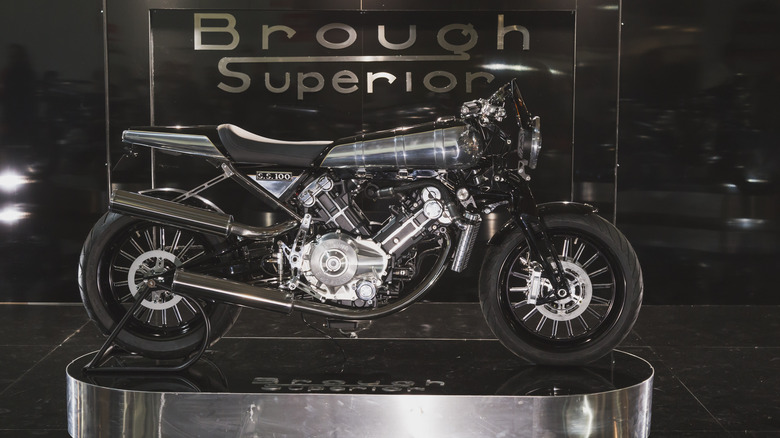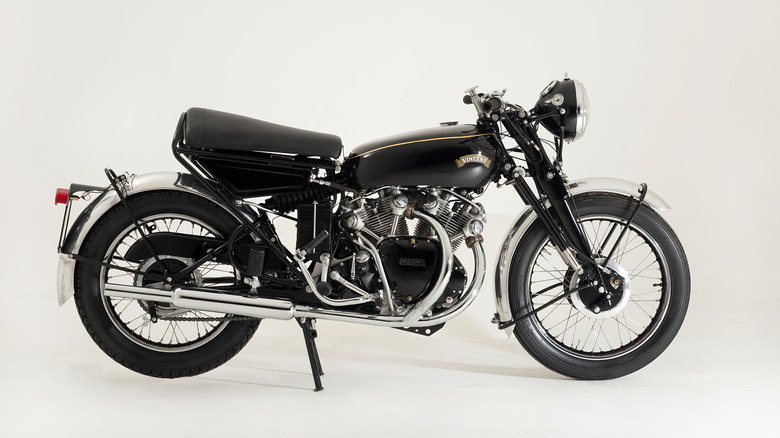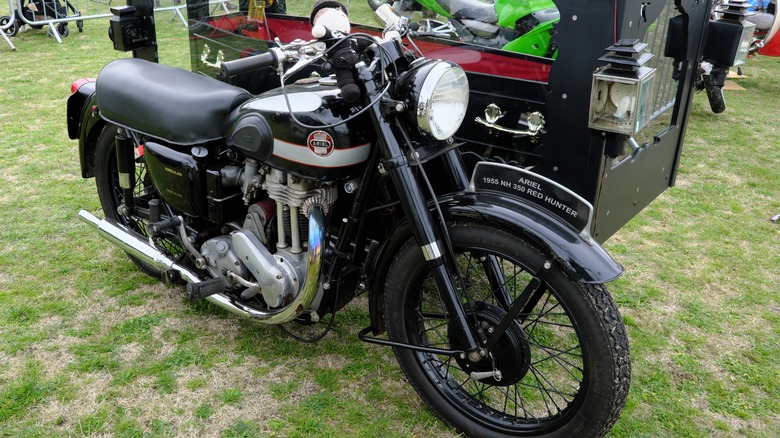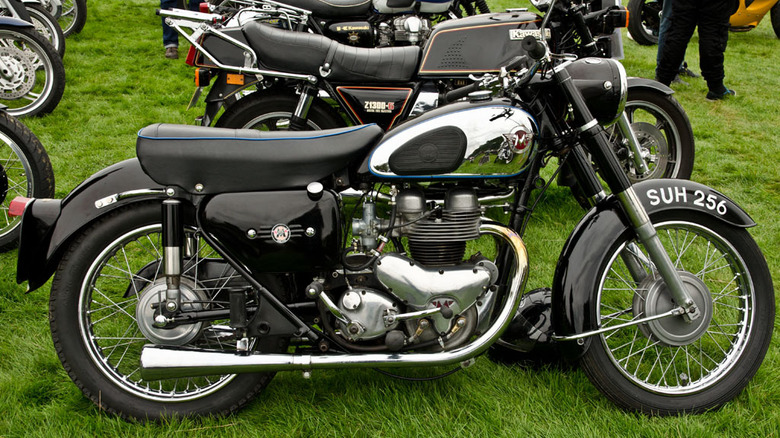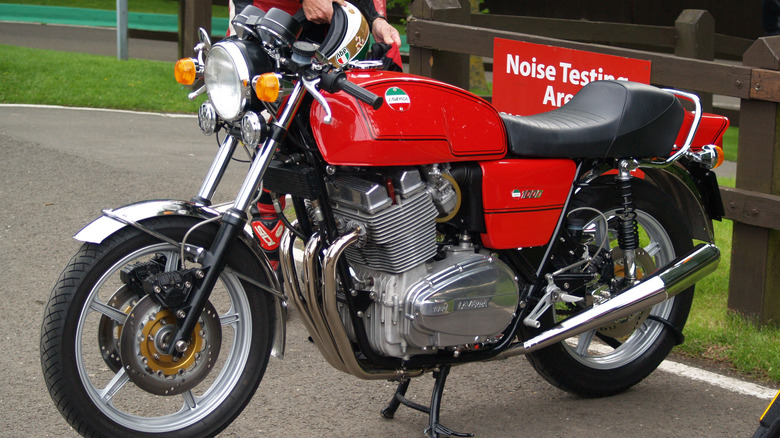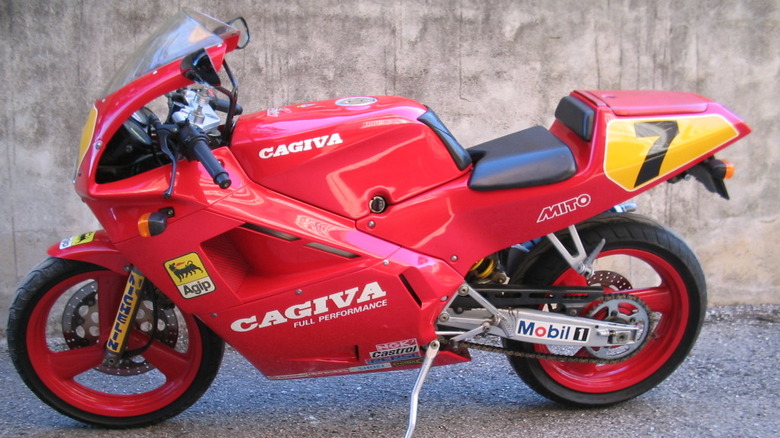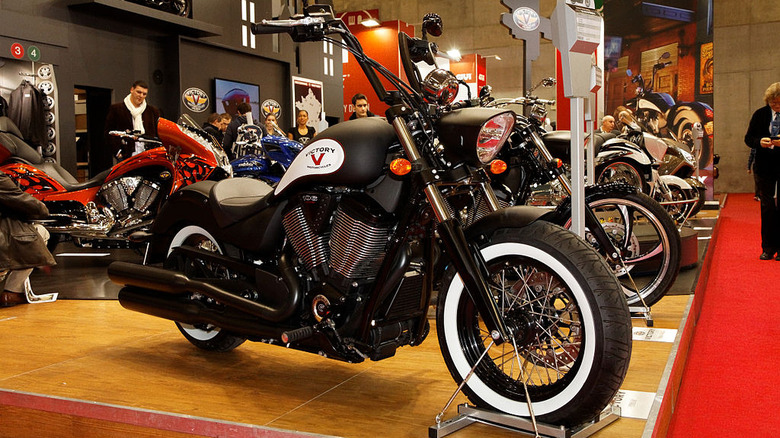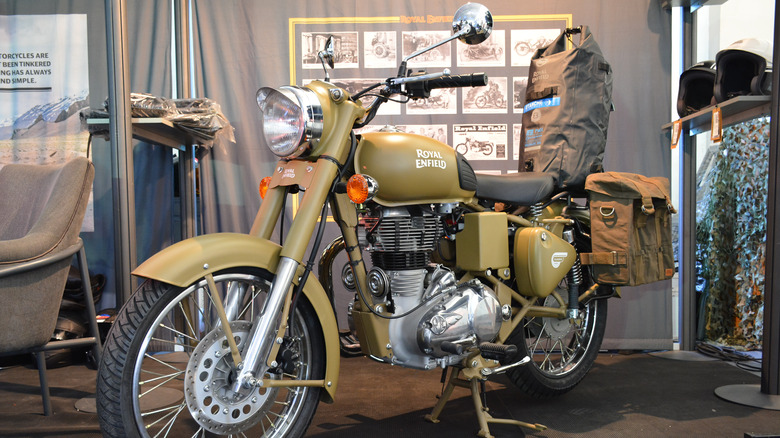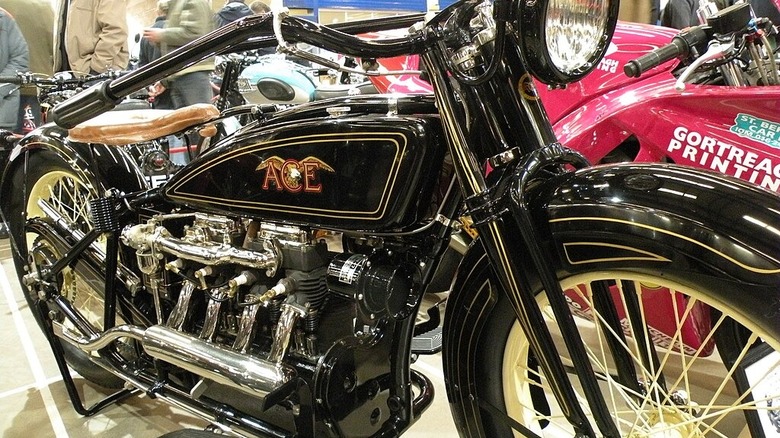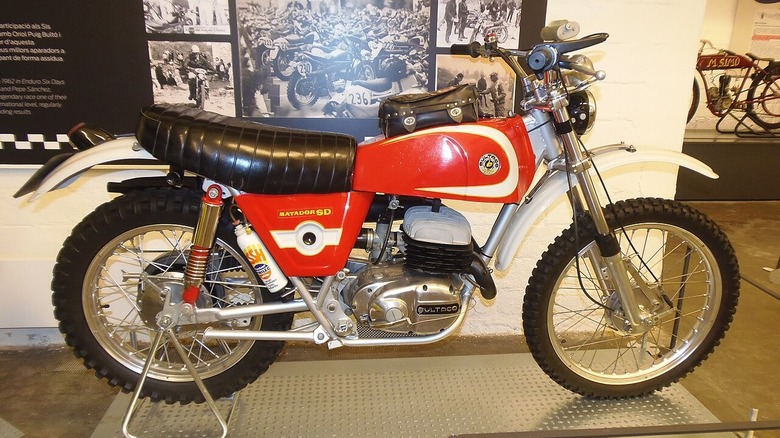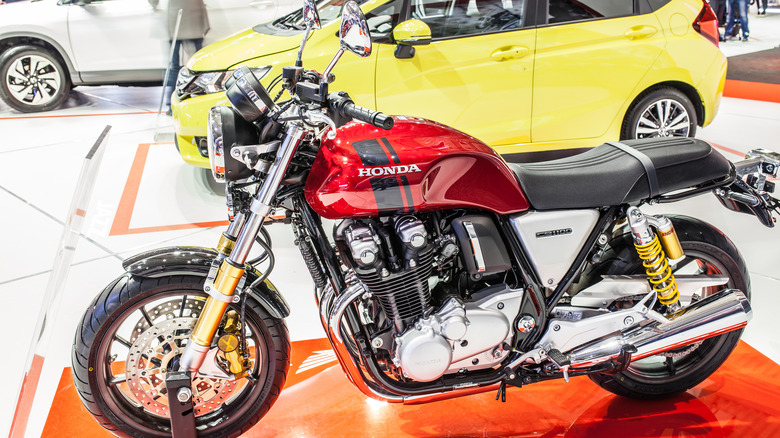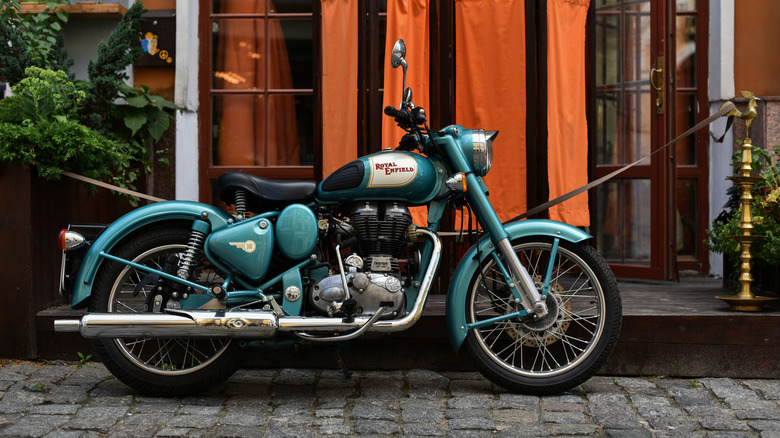10 Discontinued Motorcycles That Deserve A Modern Remake
Like many things, motorcycles go in and out of style, and brands are constantly under pressure to keep up with emerging technologies and the ever-changing demands of the average consumer. This is especially evident today as we are experiencing a sea change across the automotive industry as a whole, with the shift toward renewable energy and a tightening of emissions laws in multiple territories.
Many discontinued motorcycles, whether vintage, classic, or relatively recent, still hold a place in the hearts of former owners and enthusiasts. Some of these deserve modern remakes with upgraded parts, contemporary features, and a complete overhaul to bring them in line with the latest regulations. This is especially justifiable when considering the recent reissues of some of history's most beloved two-wheelers.
The Norton Commando, BSA Gold Star, Royal Enfield Continental GT, and Brough Superior SS100 (pictured above) have all recently experienced successful revivals, suggesting that there is still plenty of interest in the classics. The following choices were highly respected in their heyday and, having been consigned to history, deserve a renaissance for their reputation, quality, performance, and desirability.
Vincent Black Shadow
Classic marque Vincent HRD stopped making motorcycles in 1955, but its Black Shadow was the most formidable bike of its day. In "Fear and Loathing in Las Vegas," Hunter S. Thompson described it as "a fantastic bike" that he rode when covering the Mint 400 Desert Race. Upon its 1948 release, it was also the fastest ever, with a speed that topped 125 miles per hour.
The Black Shadow achieved this with a massive 998cc V-twin that took up most of the real estate of the bike's frame. It was then given a foreboding black-on-black paint job and released upon an unsuspecting public, who quickly became enamored with the aesthetically stunning and potent machine. It seems that this reputation hasn't faded over the years, as these rare motorcycles can fetch over $90,000 at auction.
The Black Shadow was very much a product of its time, and these days, a finely tuned 125cc sport bike could outperform it. However, purely based on its reputation alone, it would garner significant interest as a powerful modern retro or even a fully-faired racer that carried the venerated Vincent Black Shadow name.
Ariel Red Hunter
Nowadays, the revitalized Ariel brand is mostly associated with the Atom, a four-wheeled go-kart with rocket-like propulsion that famously turned Jeremy Clarkson's face to jelly. Yet, in its heyday, Ariel was one of the two large British motorcycle manufacturers to emerge from the industrial city of Birmingham alongside BSA.
The Red Hunter was one of Ariel's most successful motorcycles, existing in many iterations since its introduction in 1932. Characterized by its red fuel tank, supposedly inspired by the fox-hunting equestrians of the time, the 500cc, single-cylinder was upgraded to a parallel twin in the post-war years before being taken out of production in 1959. The company went bankrupt in 1967, marking the end of an era for these iconic bikes.
The Red Hunter is still fondly remembered by enthusiasts and undoubtedly a candidate for a modern remake now that retro motorcycles are all the rage. Company rival BSA successfully reissued the Gold Star, so maybe it is time to rekindle some friendly competition with another mid-capacity British classic. The now-solvent Ariel company could have just the answer, having released the Ariel Ace in 2014, its first motorcycle in over 50 years.
Matchless G11
After British motorcycle brands spent many years producing single-cylinder models, Triumph broke the mold in 1937 with the Speed Twin, the first parallel-twin motorcycle, which paved the way for countless imitators in the post-war years. One of these was the 1955 Matchless G11, the product of another erstwhile iconic marque that is better known to collectors in the new millennium.
As one of Matchless' most successful models, the G11 was a 593cc, twin-exhaust cruiser that would look welcome at any classic bike rally. The Matchless four-speed gearbox was positive, its clutch was light, vibrations through the frame were practically nonexistent, and the power delivery was smooth through the gears. Like many motorcycles that look unremarkable, its performance shone through, and it became a success within the biking public until it was eventually overshadowed by the 650cc G12 three years later.
The parallel-twin Matchless G11 would certainly receive significant attention as a modern remake to rival one of Royal Enfield's best motorcycles, the excellent Interceptor 650. As mid-capacity, retro-style motorcycles continue to give their contemporary counterparts a run for their money, it would be good to see the Matchless name adorn gas tanks in the future.
[Featured image by SG2012 via Wikimedia Commons | Cropped and scaled | CC BY 2.0]
Laverda Jota
Laverda may not be the first name that springs to mind when you think of classic motorcycle marques. However, for a time it was one of the most exciting Italian companies, rivaling compatriots like Aprilia, Benelli, Ducati, and Moto Guzzi.
One of Laverda's most successful models was the 981cc, three-cylinder Jota. In 1976, at a time when rival Triumph was having success with its triples, the Jota ruled the roost as the fastest production motorcycle in its day, with a top speed of 140 miles per hour. Speed was not its only quality; it had performance to match, with a rigid frame and taught suspension that facilitated impressive maneuverability. It also looked the part, with sophisticated Italian styling.
The Laverda Jota's classic good looks and spirited riding performance would fare well in the age of retro revivals. Coupled with its lingering reputation among classic bike enthusiasts and past sales performance, we feel it thoroughly deserves a reissue with modern features and upgraded parts.
Cagiva Mito
Cagiva was an Italian brand that seemingly had the world at its feet. Established in 1950, it was a worthy competitor to compatriot marques Aprilia and Ducati, with a wide range of dual sport, sport bikes, and sport tourer motorcycles in its diverse product line. Its C594 model has been described as one of the best-looking motorcycles ever to feature in MotoGP. Still, its sporty little Mito was the best-selling bike for four years running in the Italian market.
The Mito was a 124cc, 284-pound pocket rocket that produced 31 horsepower, giving novice riders a taste of real speed and power. However, the power-to-weight ratio wasn't the only thing going for it. The bike handled well, provided you could endure the coffin-hard saddle for longer durations, and its two-stroke engine made a noise that belied its diminutive engine capacity.
The Mito wasn't perfect by any stretch of the imagination. It suffered from reliability issues and was light on features. Yet, it was the most affordable Ducati 916 clone that you could buy and a great introduction to the world of sports bikes. Cagiva reissued the Mito in 2008 with a reduced output of 15 horsepower. Apparently, it had proved too aggressive for inexperienced riders, and there were many accidents. Since 2012, Cagiva has belonged to the long list of motorcycle brands that aren't around anymore, but if there was one model worthy of remaking to rival the Kawasaki Ninja 125, Suzuki GSX-R125, or Aprilia RS125, this would be it.
[Featured image by Ballini Matteo via Wikimedia Commons | Cropped and scaled | CC BY-SA 3.0]
Victory Vegas
Life has been hard on the American motorcycle business lately. The significant hikes in steel and aluminum import tariffs have undoubtedly rocked the foundations of an industry that was already in decline since 2006. The major marque Indian barely survived bankruptcy this century, and even Harley-Davidson has relied heavily on merchandise sales to stay in the black. A U.S. muscle cruiser brand that didn't fare so well is Victory, which went out of business in 2017.
One of Victory's flagship cruisers was the Vegas, and it still hurts a little that it's not in production as a serious competitor to Harley-Davidson's Sportster and Softail models. This bike often trumped its Milwaukee-made counterparts in performance, features, and rideability, and gave the market some much-needed competition where quality and value for money were concerned.
In true American style, the Victory Vegas had a V-twin 1,634cc engine that produced an impressive 123 horsepower. It was certainly no toy, with gut-wrenching acceleration and torque to spare. Yet, it cornered gracefully and didn't suffer the vibration and wobbles associated with this class of motorcycle.
Victory had cruisers, baggers, naked bikes, and grand tourers to its name, many of which would benefit from a modern remake. However, if we had to pick one, it would be the Victory Vegas, with its stunning sculpted lines and impressive performance that made it a genuine threat to the mighty Harley in its day.
[Featured image by Thesupermat via Wikimedia Commons | Cropped and scaled | CC BY-SA 3.0]
Royal Enfield Classic 500
I picked up my own Classic 500 Desert Storm in northern India in 2018. Previously, I had never ridden a "proper" motorcycle, only scooters, and I was about to embark on a trip across the Indian Himalayas from Manali to Leh, on the Tibetan border, then on to the disputed territory of Kashmir. These were some of the most dangerous roads and highest altitudes in the world, and it was with more than a little trepidation that I first straddled this relatively large machine. I needn't have worried.
The single-cylinder thumper tackled its task with ease, fording deep snow melts, pulling me to heights of 16,800 feet, and bouncing over very rugged terrain without so much as a complain — all while lugging over 60 pounds of luggage and around 8 gallons of fuel. I was seriously impressed and, later, confused when, in 2020, Royal Enfield started winding down production of the Classic 500.
With its little sibling Classic 350 reissued in 2022 to great acclaim, surely it's about time the Classic 500 got the same treatment. Indeed, Royal Enfield has even had success with the larger, parallel-twin Interceptor 650. A 500cc single-cylinder model would nicely bridge the gap between the Interceptor and the smaller capacity cruisers, especially for the legions of Classic range fans, and even more so if it came with tempting upgrades like a rear disc brake, ABS, and, crucially, a fuel gauge.
Ace Four
Few people outside serious motorcycle fans will remember the Excelsior-Henderson Company of the early 20th century. Fewer still will remember its spin-off company, Ace, established in 1917, which produced an inline four-cylinder boutique motorcycle known as the Ace Four, which would later evolve as the Indian Ace after the company was acquired by Indian Motorcycles in 1927.
If the Brough Superior was worthy of a revival in the 21st century, then its American counterpart, the beautiful Ace Four, is too. There's plenty of potential in this classic bike for a complete modern overhaul. It featured a 1,220cc air-cooled engine and weighed in at 365 pounds — impressive even by today's standards. Its build quality was so high that it became known as the Two-Wheeled Duesenberg, referring to the most exclusive car company of its day.
The Ace Four was one of the first inline-four motorcycles ever produced. Its trailblazing configuration has featured in some of the fastest modern motorcycles, including the Kawasaki Ninja H2 and the Suzuki Hayabusa, not to mention the "world's first superbike," the Honda CB750. This kind of heritage and reputation is hard-earned, making the Ace Four an ideal candidate for a contemporary remake someday.
[Featured image by Thruxton via Wikimedia Commons | Cropped and scaled | CC BY 3.0]
Bultaco Matador
Spanish company Bultaco is all but a distant memory in motorcycling circles, yet in its day it was a force to be reckoned with and a true innovator in the industry. Founded in 1944, it became a significant contender in motorsports. The company produced genuinely awe-inspiring vehicles like the Pursang motocross bike, the TSS road racer, the Sherpa trials bike, and the dual sport Matador, before declaring bankruptcy in 1979, after 35 years in business.
The Matador was first released as a 200cc version with some success. However, its 250cc iteration released in 1966 really caught the imagination of a larger motorcycling population. It was more torquey and could manage highway speeds while providing extra raw power in the dirt.
Often cited as the world's first two-stroke dual sport, the Bultaco Matador featured chunky off-road tires, a tapered fiberglass fuel tank, long travel front forks, and a recessed muffler with an under-seat exhaust. Height-adjustable handlebars facilitated standing on the foot pegs when riding in the rough, and it handled well on rugged and paved terrain.
In a world where dual sport motorcycles account for a significant market share, the Bultaco Matador would benefit from a modern-day makeover to rival those equivalents made by the Japanese "Big Four." Bultaco itself was briefly revived in 1980 as an electric bike manufacturer, again ahead of its time, but sadly suspended operations again in 2018.
[Featured image by Peprovira via Wikimedia Commons | Cropped and scaled | CC BY 3.0]
Honda CB1100
The Honda CB750 entered the world stage to great acclaim in the 1970s. Hailed as the world's first superbike, the inline four-cylinder beast quickly became a hit with racing teams and the biking public as an innovative, affordable, and reliable machine that performed well. In 2013, Honda released the CB1100 as a higher-capacity modern retro version of its classic sibling, with up-to-date features that provided an all-around better riding experience.
Aesthetically, the CB1100 had much in common with its older relative, sticking with the twin upswept exhausts, twin-dial chrome dash, long dual seat, and large round headlamp. Only the sculpted fuel tank had hints of a more contemporary style. However, the 1,140cc, 80 brake horsepower engine — Honda's first air-cooled inline four for 20 years — was a notable improvement on the CB750 and just as reliable.
In an age when many modern retros are making a successful comeback, the Big Wing brand unceremoniously discontinued the CBR1100. It simply didn't feel it was worth upgrading its air-cooled inline four to meet the latest Euro5 emissions standards. Had it doubled down and stuck to its beefed-up modern retro principles, the bike could have continued its successful run well into the future.
Methodology
We arrived at our selected motorcycles by comparing current market trends, such as modern retro and small-capacity sport bikes, with those of their historic counterparts. We also delved into specific models' heritage and historical significance, as well as their broad appeal to classic bike enthusiasts. In the case of more recent discontinuations, we considered how they might benefit from a modern overhaul that meets the demands of consumers and current motorcycle legislation. We also considered historic motorcycle reviews from veteran publications, such as Cycle World and Motorcycle News, as well as personal experience (where applicable), to help inform our decisions.
